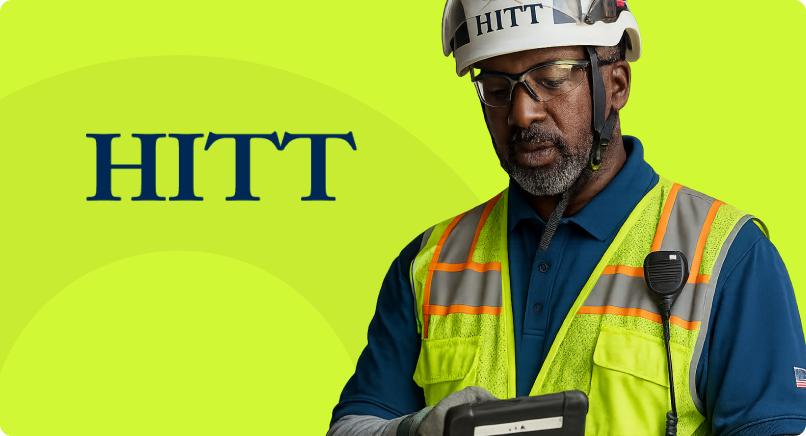
Miles-McClellan Reduces Scheduling Friction and Unifies their Teams
Miles-McClellan faced a common challenge: no clear owner of the construction schedule. With disconnected tools and siloed processes, coordination suffered—until they found Planera. Vice President, Brad Bloomberg, shares how Planera transformed their approach.
05
Statistic
10
Statistic
11
Statistic
THE CHALLENGE
Who Owns the Schedule?
For years, Miles-McClellan wrestled with an all-too-common issue in construction: no clear owner of the schedule. Superintendents were closest to the work happening day-to-day but often didn’t have the tools—or time—to manage updates. Project managers, typically based in the office, had more access to the scheduling software, but not always the up-to-date context from the field.
This led to disconnects, confusion, and duplicated efforts. Schedules were frequently outdated or inconsistent across teams. Worse, the scheduling process became siloed—just another thing someone had to do, rather than a collaborative effort to plan and execute the work.
Their previous scheduling tool, Phoenix Project Manager, was powerful but limited in who could actually use it:
- It required a license, which meant not everyone had access.
- It was complex, especially for superintendents who didn’t have the time to sit behind a computer and learn a new tool.
- It wasn’t collaborative. Any schedule changes had to be routed through a central user, often delaying important updates and decisions.
“People just didn’t want to engage with it,” Brad shared. “There wasn’t a clear process. And because it wasn’t intuitive or accessible, the schedule wasn’t as reliable as it needed to be.”

“It turns the schedule from something you have to do… into a tool that actually helps get the job done."
DISCOVERING PLANERA
A Platform Built for the Entire Team
When Brad’s team discovered Planera, the difference was immediate. It checked all the boxes they had been missing—and brought in a few unexpected benefits too.
Why Planera Stood Out:
- Cloud-Based Access: Everyone, from field teams to office staff, could now view and update the schedule in real time from any device—no more waiting for PDFs or emailing spreadsheets.
- Intuitive Interface: With a drag-and-drop experience, Planera made it easy for even non-technical users to update tasks, adjust durations, or re-sequence work visually.
- Real-Time Collaboration: Updates made by one team member are instantly visible to the rest, helping the entire team stay aligned.
- Field-Friendly Design: Superintendents didn’t need a laptop or formal training to engage with the schedule—they could participate directly from the jobsite using a tablet or mobile phone.
- Shared Ownership: The simplicity of Planera encouraged broader adoption. Suddenly, the schedule wasn’t “owned” by one person—it was a living document that everyone contributed to.
“What clicked for us,” Brad said, “was how Planera changed the perception of the schedule. It became something we wanted to use—not something we had to.”
RESULTS
Real Results on Real Projects
Miles-McClellan began using Planera on active projects, including a renovation for Columbus City Schools, and quickly saw results.
For starters, field and office teams were finally in sync. Superintendents began updating the schedule directly during pull planning sessions or coordination meetings, eliminating lag time between changes in the field and updates in the system.
Project managers, on the other hand, gained trust in the data. They no longer had to chase updates or merge versions—they could log in and instantly see the latest status of any task or phase.
“It’s night and day,” Brad said. “You don’t need a printout or a meeting just to know where things stand. Everyone sees the same thing, and that alignment helps drive better decisions.”
Another major benefit: the potential to involve subcontractors more deeply in the scheduling process.
Historically, subs were handed a Gantt chart and expected to conform to it. With Planera, Brad’s team now had the ability to invite trade partners into the process early—asking for feedback, adjusting sequences together, and increasing accountability.

“We’re just scratching the surface of what we can do with subs. That level of collaboration wasn’t really possible before.”
FROM TASK TO TOOL
A Culture Shift Around Scheduling
Perhaps the most valuable outcome wasn’t just a better tool—but a culture shift.
Scheduling is no longer a reactive task performed by a few people. It’s now an active part of daily planning, where all stakeholders have visibility and input. That transparency has led to fewer surprises, faster decision-making, and more confident execution on the jobsite.
“It turns the schedule from something you have to do… into a tool that actually helps get the job done,” Brad said.
CONCLUSION
Conclusion
As Planera becomes a staple across more of their projects, the Miles-McClellan team sees opportunity to go even further—building more structured scheduling workflows, engaging trade partners earlier, and using Planera to support everything from pursuit planning to project turnover.
About
Miles-McClellan
You deserve better scheduling software.
Request a Demo















